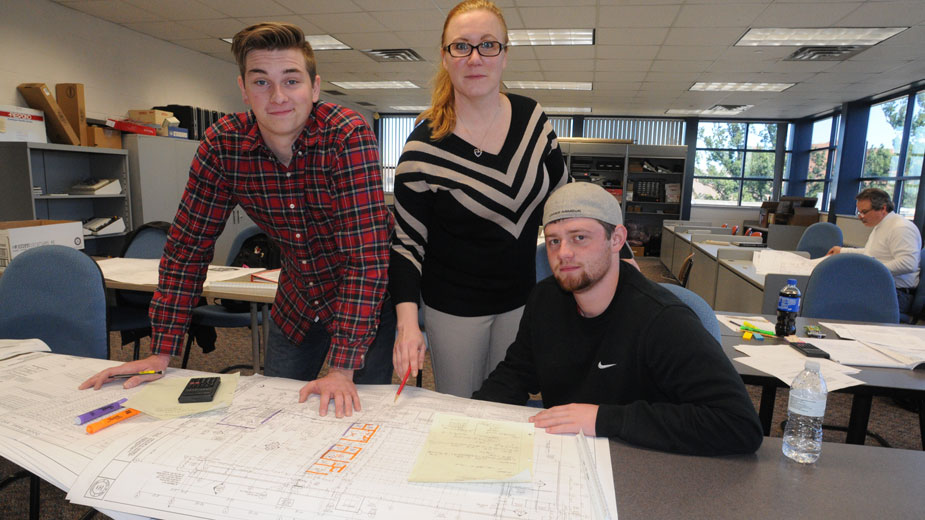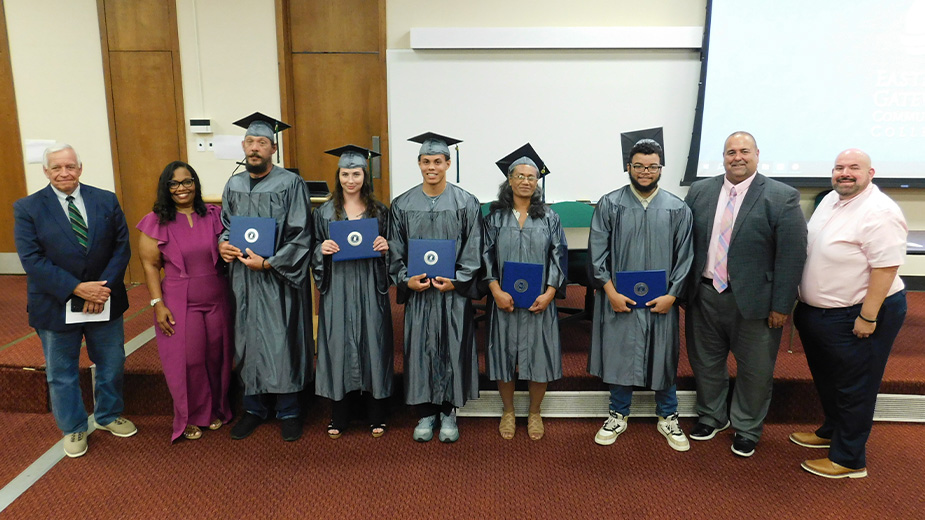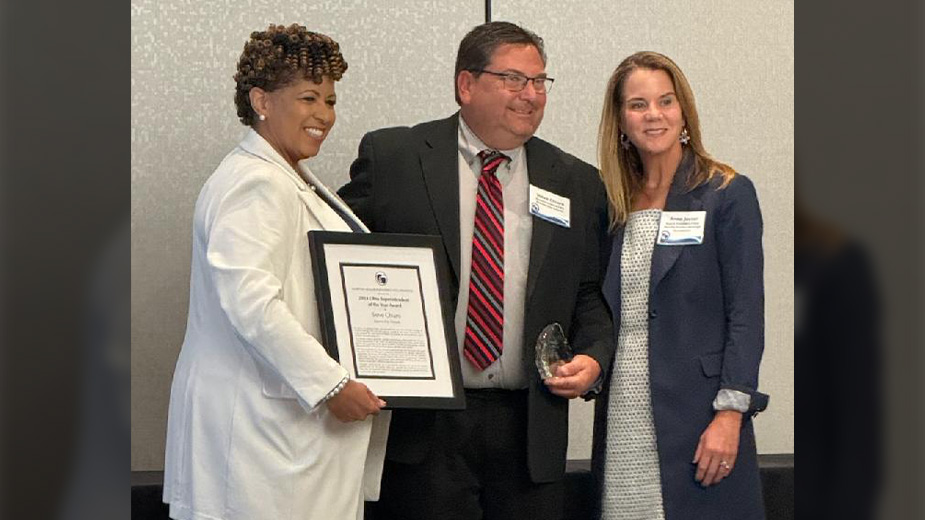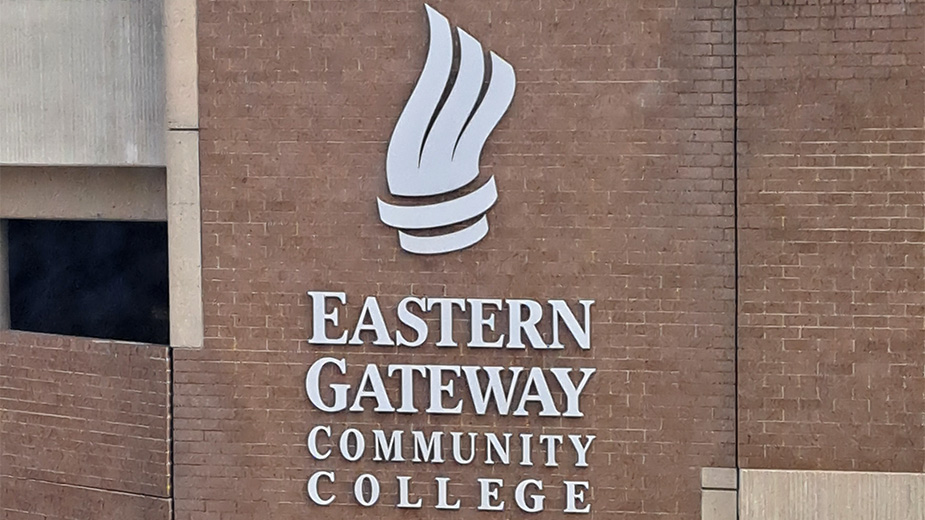Builders Challenge YSU Students in Estimating Contest
YOUNGSTOWN, Ohio – What did civil and construction engineering technology students at Youngstown State University learn from Adolph Johnson & Son Co. building a retail outlet for Phantom Fireworks in West Salem, Ohio?
Plenty, it turned out Friday as four teams of students – 27 in all – spent a long day over sets of 60 schematics and two loose leaf binders to arrive at their bids judged by a panel of four general contractors. The annual construction estimating competition is sponsored by the Builders Association of Eastern Ohio and Western Pennsylvania.
At $1.809 million, Team 2 came closest to the winning bid of $1.792 million submitted in 2011 by Paul Johnson, president of Adolph Johnson, Mineral Ridge.
Regardless, the panel of Jim Santini, Dan Terreri, Howard Agueda, Chris White and Craig Fauvie declared Team 3 the winners despite submitting the highest bid, $1.959 million.
Johnson, a co-developer of this year’s contest, allowed the use of his Phantom store plans. The other co-developer is Carol Lamb, director of YSU’s school of engineering technology.
The four teams of students had to defend and justify how they arrived at their bids as the judges, especially Agueda of VEC Inc., asked the tough questions to see how well they understood the exercise and arrived at their figures.
Terreri is president of Daniel A. Terreri & Sons, White is with Boak & Sons Inc, and Fauvie with MS Consultants Inc.
Team 3 comprised senior Clint Pullam, juniors Matt Wright, Danny Marker and Shannon Moyers, and sophomores Cody Bova and Kyle Goff. Jason Gibson of The Jack Gibson Construction Co. was their mentor.
While the team members were assigned beforehand, each team chose its project leader. The teams were chosen so they would be equally matched. All but Team 1 had a member from the 2015 contest winners on its roster.
The project leaders met at 8 a.m. in Room 2400 of Moser Hall to get their materials to which they and their teams would devote most of their day. The judges held a pre-bid meeting at 9 a.m. to clarify particulars, review the rules and answer questions that had arisen from the first hour.
Information provided included pricing of materials – such as structural steel, plywood, asphalt and concrete — and labor and subcontractors’ work, such as landscaping.
Also present were Dan Fry, labor relations director for The Builders , and YSU assistant professor of civil and construction engineering technology Bob Korenic, who oversaw the daylong exercise.
Each team had at least one mentor from The Builders but they were excluded from the four classrooms where each team was isolated during the competition.
In addition to Gibson, mentors were Joe DeSalvo and Jim Bayer of DeSalvo Construction Co. Inc., Dave Wendel of Johnson & Son, Ryan Hively of Hively Construction Co. Inc., Ed Stevens of Stevens Masonry Construction Inc., White of Boak and Kyle Leonard of Imperial Glazing Concepts Inc.
The Business Journal shadowed Team 4, which submitted the lowest bid, $1.705 million.
Inside a classroom on the fourth floor, A.J. Vincent and Rey Colon, two members of the 2015 winning team, and Greg Lipp, Nick Diloreto, Mark Metzger and team leader Jo-Lynn Campbell spread out the schematics that measured 24-by-36 inches and worked quietly on their computations.
Each had a pad of graph paper, a calculator, mechanical pencil, eraser and three highlighters – yellow, pink and orange – to measure and check off the items. The calculators, while capable of higher mathematics, were used only to add, subtract, multiply and divide, Colon said.
Campbell, who has a baccalaureate in professional writing and editing but was listed as a freshman engineering student, had assigned the areas of responsibility. She took roofing, parapets and paneling. Colon, age 52 and a senior who was giving up a day of work, took concrete, footing and masonry. Vincent was responsible for carpentry, Lipp asphalt, paving and exterior concrete, and Diloreto doors, drywall, roof sheathing and studs.
All proceeded smoothly, items checked off, forms completed, little conversation until about 2:20, 40 minutes before deadline. By this time, the schematics were spread over more desks and the loose-leaf binders checked more often.
Conversation became more frequent and one could head the tension in the members’ voices as they asked and answered questions. Holes in the information asked for and discrepancies appeared. Uncertainty rose about what remained to be filled in.
Lipp said he thought he saw some mistakes in the subcontractor’s data. Campbell agreed information was missing from subcontractors’ bids. “That’s where we asked most of our questions [in the pre-bid meeting].”
“Fifty-two days. Is that calendar days or workdays,” one asked of the time allotted to complete the fireworks store.
Uncertainty over the 10% markup came up. “The math worked out,” Colon said, advising, “Split it 5 and 5. We had a little bit of confusion,” he informed the team.
Pause.
Colon, based on his experience in last year’s competition, emphasized, “They kill is if we don’t do the math right. Double check your work.”
Campbell: “Everybody sign this?” referring to the formal bid submission. “Sign it and print your name below [your signature].”
Colon: “Let’s double check it [the figures]. We’ve got nine minutes.”
They left the classroom and walked down the stairs to submit their proposal with two minutes to spare.
Then came the hour wait before their 15-minute meeting with the judges. (Team 4 was third.) Meeting in a computer labor to discuss how they would make their presentation, Colon counseled Campbell on what to say and not say and how to present their defense.
The panel tried to set them at ease.
Asked Terreri, “Did you feel you gained any insights?” from the exercise.
Campbell responded, “We were working as one. I thought we worked well together.”
Agueda, however, quickly noted, “The bond form was not filled out correctly. You left too many blanks. That would get you disqualified from a government project.”
When Colon observed that the scales didn’t match on the schematics, a judge laughed and told him, “Get used to it.”
As the 15 minutes drew to a close, White of Boak & Sons said, “You should be proud of yourselves. It was quite a challenge.”
Of their last 45 minutes in the classroom, Agueda told them, “You got a little taste of the adrenalin [bid preparers feel] in the real world.”
Pictured: Nick Di Loredo, Jo Lynn Campbell, and A.J .Vincent, YSU engineering students participating in the 2016 Builders Association Construction Estimating Competition.
Copyright 2024 The Business Journal, Youngstown, Ohio.



